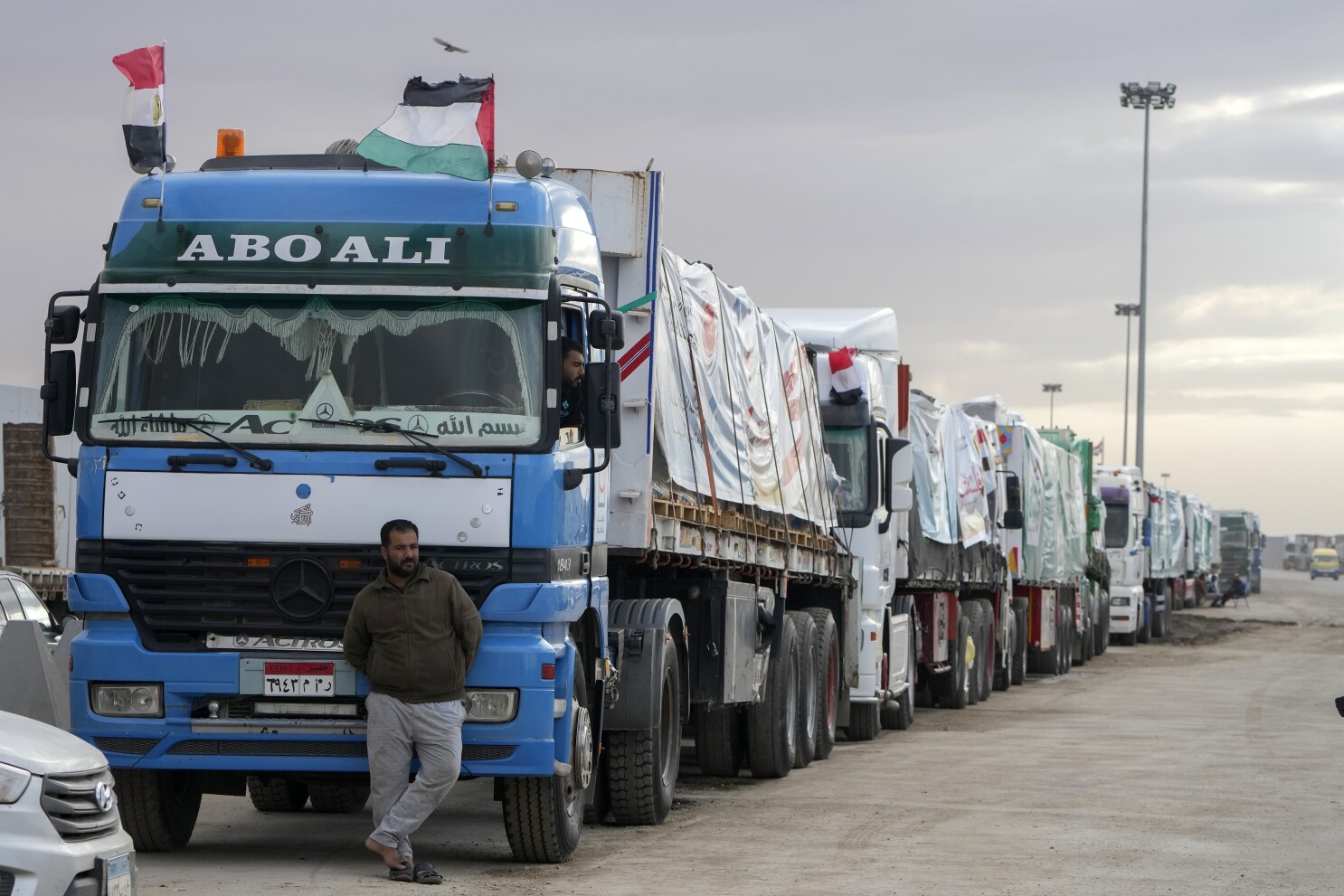In a significant development following the recently brokered pause in hostilities, Israeli authorities have confirmed that 120 trucks carrying humanitarian aid successfully entered the Gaza Strip on the first day of the truce. The aid, which included food, water, medical supplies, and other essential items, marks one of the largest single-day deliveries since the renewed conflict began weeks ago.
The temporary cessation of fighting, facilitated through intense diplomatic engagements led by Qatar, Egypt, and the United States, provided a crucial window for humanitarian relief in the besieged Palestinian territory. The truce, which took effect amid mounting international pressure over the worsening humanitarian crisis in Gaza, has been described by aid groups as a “lifeline moment” for civilians trapped under deteriorating conditions.
Before the latest escalation of violence, Gaza typically received about 500 truckloads of supplies daily — a mix of commercial goods and humanitarian assistance that supported the enclave’s two million residents. The current figure of 120 trucks, though a welcome intervention, still falls significantly short of what is required to meet basic daily needs.
Over the past several weeks, Gaza has been reeling under heavy bombardment and a strict blockade that saw food, fuel, and medicine supplies dwindle to crisis levels. The United Nations and various humanitarian organizations have repeatedly raised alarm over the growing risk of starvation, disease, and collapse of essential health services.
Israeli officials stated that the aid convoys were thoroughly inspected before being allowed into Gaza through the Rafah and Kerem Shalom crossings. According to reports from the Palestinian Red Crescent and other international humanitarian agencies on the ground, the trucks were immediately deployed to distribution centers and emergency shelters housing displaced civilians, many of whom have been without stable access to clean water or healthcare for weeks.
As the pause holds, albeit tenuously, discussions continue among international stakeholders to extend the window of calm to enable more sustained relief efforts. However, Israeli defense authorities maintain that any extension would depend on the return of hostages held by Hamas and further security guarantees.
While the 120-truck delivery is a step forward, humanitarian actors say it merely scratches the surface of Gaza’s needs. Speaking to KIIN360, a UN representative involved in logistics coordination stressed, “Getting aid in is only part of the equation — we need sustained access, safe corridors for distribution, and a complete lifting of restrictions that have crippled life in Gaza.”
For now, the people of Gaza and aid workers on the ground continue to hope that this temporary pause will evolve into a more stable and lasting solution — one where humanitarian principles are respected and civilians no longer bear the brunt of a prolonged conflict.

